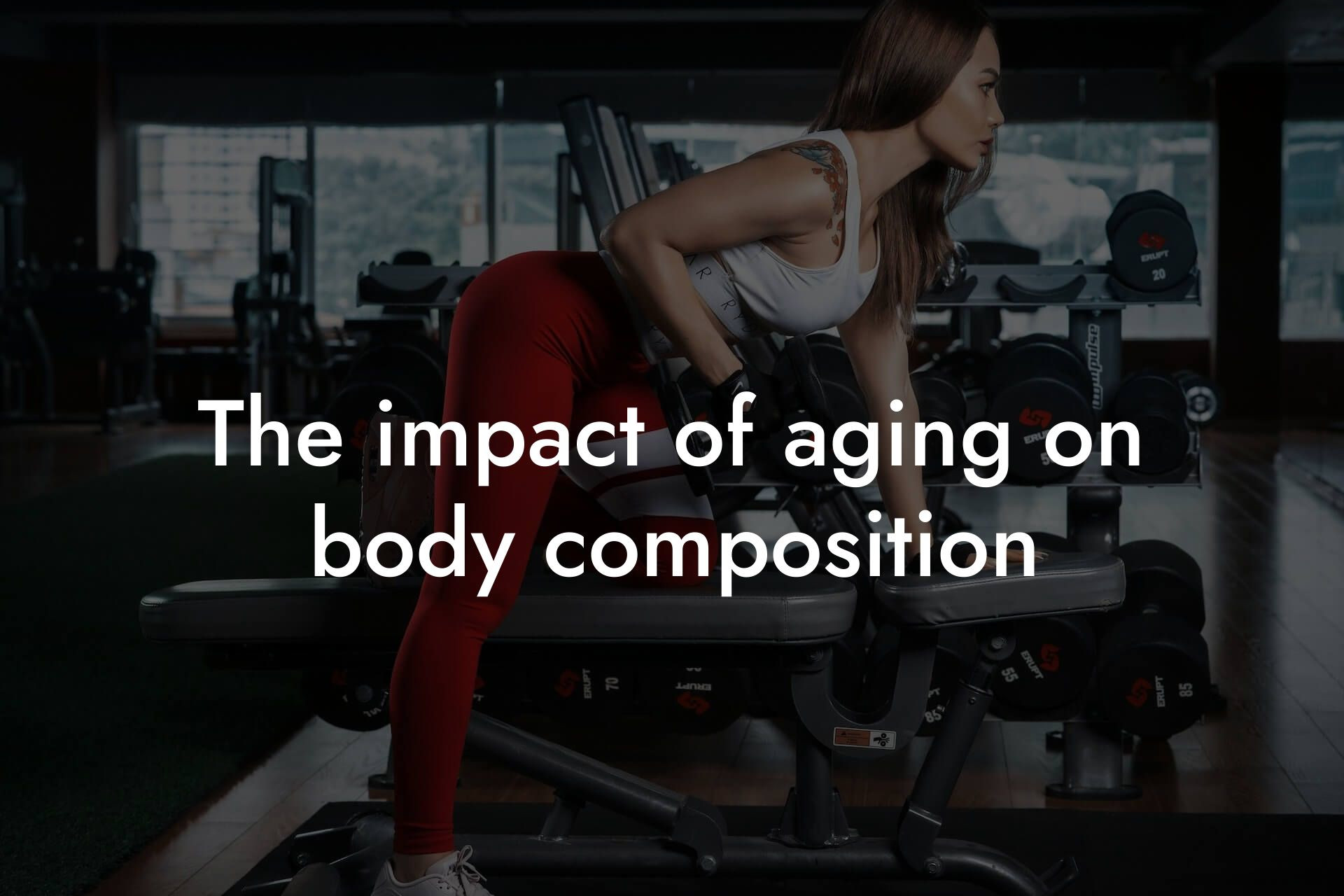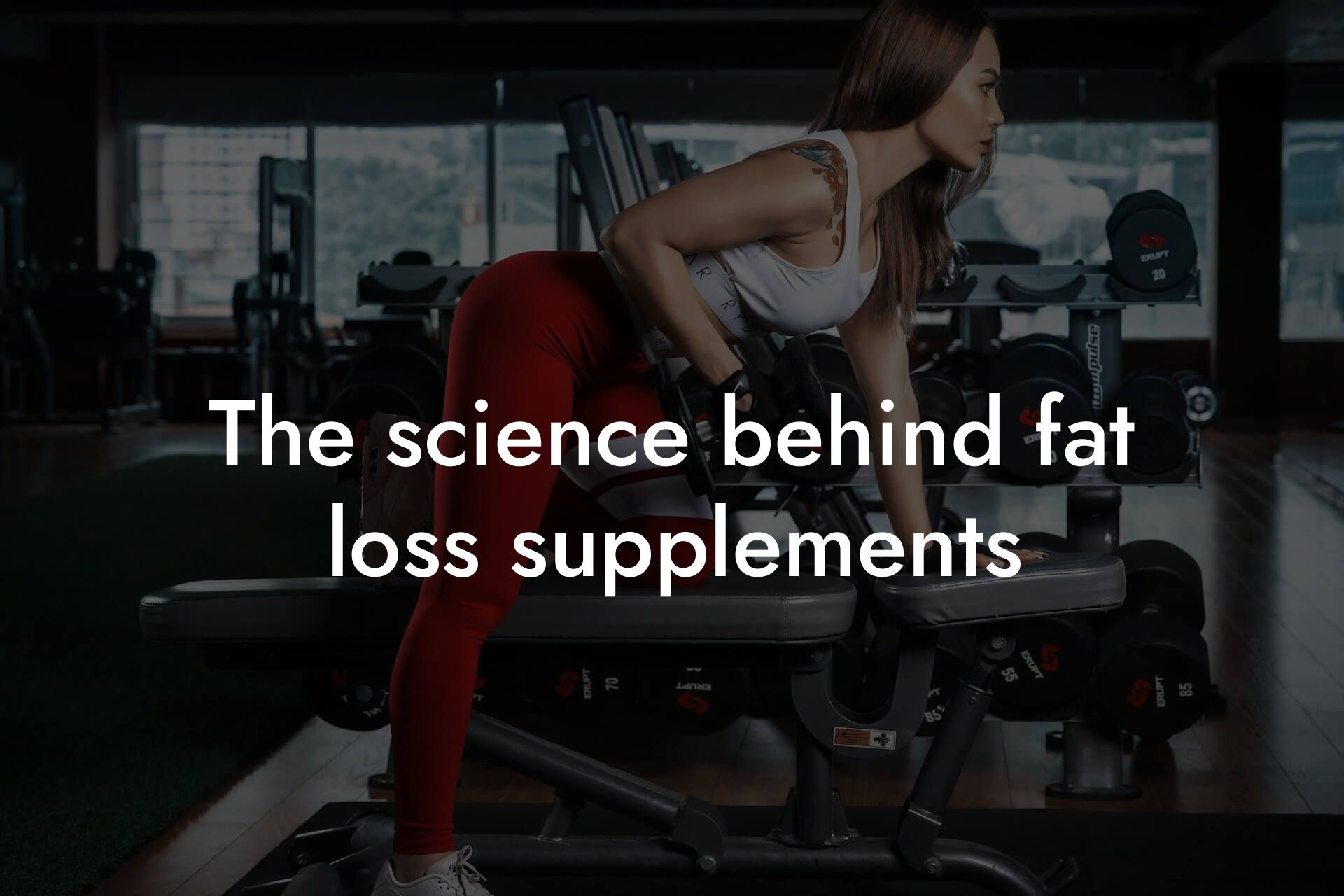As high-earning professionals, you understand the importance of maintaining a healthy and fit physique. It's not just about looking good; it's about performing at your best in all aspects of life. At Tano Performance Group, we're dedicated to providing you with the most advanced and accurate body composition analysis technology to help you achieve your goals. In this article, we'll delve into the future of body composition analysis technology and how it's transforming the way we approach physical assessment.
Table of Contents
- Current State of Body Composition Analysis
- Advancements in DEXA Technology
- Emerging Technologies in Body Composition Analysis
- Artificial Intelligence and Machine Learning in Body Composition Analysis
- Personalized Medicine and Body Composition Analysis
- Wearable Technology and Body Composition Analysis
- The Future of Body Composition Analysis: Integration and Accessibility
- Frequently Asked Questions
Current State of Body Composition Analysis
Traditional methods of body composition analysis, such as BMI (Body Mass Index) and skinfold measurements, have long been criticized for their limitations and inaccuracies. BMI, for instance, doesn't account for muscle mass or body fat distribution, while skinfold measurements are prone to human error and can be uncomfortable for the individual being measured. The advent of DEXA (Dual-Energy X-ray Absorptiometry) technology has significantly improved the accuracy and convenience of body composition analysis. DEXA machines, like the one used at Tano Performance Group, provide a comprehensive and non-invasive assessment of body composition, including bone density, lean mass, and body fat percentage.
Advancements in DEXA Technology
DEXA technology has come a long way since its inception, and continuous advancements are being made to improve its accuracy and capabilities. One of the most significant developments is the introduction of high-definition DEXA scans, which provide a more detailed and precise assessment of body composition. This is achieved through the use of advanced software and higher-resolution imaging, allowing for a more accurate calculation of body fat percentage, lean mass, and bone density. Additionally, some DEXA machines now offer advanced features such as visceral fat analysis, which measures the amount of fat around internal organs, providing valuable insights into metabolic health.
Emerging Technologies in Body Composition Analysis
Beyond DEXA technology, several emerging technologies are poised to revolutionize the field of body composition analysis. One such technology is bioelectrical impedance analysis (BIA), which uses a small device to send an electrical current through the body, measuring the resistance to determine body composition. BIA is non-invasive, quick, and easy to use, making it an attractive option for those who require frequent body composition assessments. Another technology gaining traction is 3D body scanning, which uses advanced cameras and software to create a detailed, three-dimensional model of the body. This allows for precise measurements of body shape, size, and composition, providing valuable insights into physical changes over time.
Artificial Intelligence and Machine Learning in Body Composition Analysis
The integration of artificial intelligence (AI) and machine learning (ML) in body composition analysis is expected to have a significant impact on the industry. AI-powered algorithms can analyze large datasets and identify patterns, allowing for more accurate predictions and personalized recommendations. For instance, AI can be used to analyze DEXA scan data and provide tailored nutrition and exercise plans based on an individual's specific body composition and goals. ML can also be used to improve the accuracy of body composition analysis by identifying and correcting errors in the data.
Personalized Medicine and Body Composition Analysis
The future of body composition analysis lies in personalized medicine, where individuals receive tailored advice and treatment based on their unique genetic profile, lifestyle, and body composition. Advanced body composition analysis technologies, such as DEXA and BIA, can provide the necessary data to create personalized plans for weight management, athletic performance, and overall health. By combining body composition data with genetic information and lifestyle factors, healthcare professionals can develop targeted interventions to improve health outcomes and reduce the risk of chronic diseases.
Wearable Technology and Body Composition Analysis
Wearable technology, such as smartwatches and fitness trackers, has become increasingly popular in recent years. The next generation of wearable devices is expected to incorporate advanced body composition analysis capabilities, allowing individuals to track their body fat percentage, lean mass, and other health metrics in real-time. This will enable individuals to make data-driven decisions about their diet and exercise habits, leading to improved health outcomes and better performance.
The Future of Body Composition Analysis: Integration and Accessibility
The future of body composition analysis lies in integration and accessibility. As technology advances, we can expect to see a convergence of different technologies, such as DEXA, BIA, and 3D body scanning, to provide a more comprehensive and accurate assessment of body composition. Additionally, the increasing availability of wearable devices and mobile apps will make body composition analysis more accessible to a wider range of people, empowering individuals to take control of their health and wellbeing. At Tano Performance Group, we're committed to staying at the forefront of body composition analysis technology, providing our clients with the most advanced and accurate assessments to help them achieve their goals.
In conclusion, the future of body composition analysis technology holds immense promise for individuals seeking to improve their physical appearance, athletic performance, and overall health. From advancements in DEXA technology to emerging technologies like BIA and 3D body scanning, the options for accurate and convenient body composition analysis are expanding rapidly. As AI, ML, and personalized medicine continue to shape the industry, we can expect to see even more innovative solutions emerge. At Tano Performance Group, we're dedicated to providing our clients with the most advanced and accurate body composition analysis technology, empowering them to achieve their goals and take their performance to the next level.
Frequently Asked Questions
What is body composition analysis technology?
Body composition analysis technology refers to the methods and tools used to measure and assess the various components of the human body, including fat mass, lean mass, bone density, and water percentage. This technology has become increasingly popular among health and fitness enthusiasts, as it provides valuable insights into overall health and physique.
Why is body composition analysis important?
Body composition analysis is important because it allows individuals to track changes in their body composition over time, identify areas for improvement, and make informed decisions about their diet and exercise routine. It's particularly useful for high-earning professionals who want to maintain a healthy and fit physique despite their busy schedules.
What are the different types of body composition analysis technologies?
There are several types of body composition analysis technologies, including dual-energy X-ray absorptiometry (DXA), hydrostatic weighing, skinfold measurements, bioelectrical impedance analysis (BIA), and air displacement plethysmography (ADP). Each technology has its own strengths and limitations, and some are more suitable for certain individuals or goals than others.
What is DXA technology, and how does it work?
Dual-energy X-ray absorptiometry (DXA) is a non-invasive technology that uses low-level X-rays to measure bone density and body composition. It works by emitting two X-ray beams with different energy levels, which are absorbed by the body at different rates depending on the density of the tissue. The resulting data is then used to calculate bone density, fat mass, and lean mass.
How accurate is DXA technology?
DXA technology is highly accurate and reliable, with a margin of error of around 1-2%. It's widely considered the gold standard for measuring bone density and body composition, and is used in many research studies and clinical settings.
What is hydrostatic weighing, and how does it work?
Hydrostatic weighing is a method of body composition analysis that involves measuring the density of the body by weighing it underwater. Because fat is less dense than water, the amount of weight lost while submerged is proportional to the amount of fat in the body. This method is highly accurate, but can be time-consuming and requires specialized equipment.
What are skinfold measurements, and how do they work?
Skinfold measurements involve using a caliper to measure the thickness of the skin at specific points on the body. This data is then used to estimate body fat percentage. While skinfold measurements are relatively inexpensive and easy to perform, they can be less accurate than other methods and require a high degree of skill and training.
What is bioelectrical impedance analysis (BIA), and how does it work?
Bioelectrical impedance analysis (BIA) is a non-invasive technology that uses a small electrical current to measure the resistance of the body to the current. This resistance is affected by the amount of water and electrolytes in the body, which are used to estimate body fat percentage. BIA is quick and easy to perform, but can be less accurate than other methods, particularly for individuals with a high amount of muscle mass.
What is air displacement plethysmography (ADP), and how does it work?
Air displacement plethysmography (ADP) is a method of body composition analysis that involves measuring the volume of air displaced by the body when it's seated in a sealed chamber. This volume is then used to calculate body density, which is used to estimate body fat percentage. ADP is highly accurate and comfortable for the individual being measured, but requires specialized equipment.
How often should I get my body composition analyzed?
The frequency of body composition analysis depends on your individual goals and needs. If you're trying to lose weight or improve your physique, it's recommended to get your body composition analyzed every 4-6 weeks to track progress. If you're simply looking to maintain your current physique, you may only need to get analyzed every 3-6 months.
What can I expect during a body composition analysis?
During a body composition analysis, you can expect to be asked to remove any clothing or jewelry that may interfere with the measurement, and to stand or lie down on a specialized platform or table. The actual measurement process typically takes only a few minutes, and the results are usually available immediately.
How long does a body composition analysis take?
The length of a body composition analysis can vary depending on the technology being used, but most measurements take only a few minutes to complete. Some technologies, such as DXA, may require a few extra minutes to set up and calibrate, but the actual measurement process is typically quick and easy.
Is body composition analysis safe?
Yes, body composition analysis is completely safe and non-invasive. The technologies used are designed to be safe and comfortable for the individual being measured, and do not involve any risk of injury or harm.
Can I get a body composition analysis if I have a pacemaker or other implantable device?
It's generally recommended to avoid certain types of body composition analysis, such as DXA, if you have a pacemaker or other implantable device. However, other technologies, such as BIA or ADP, may be safe and suitable for individuals with these devices. It's always best to consult with a healthcare professional or the manufacturer of the device before undergoing a body composition analysis.
How do I choose the right body composition analysis technology for my needs?
When choosing a body composition analysis technology, consider your individual goals and needs, as well as the accuracy and reliability of the technology. It's also important to consider the cost, convenience, and comfort of the measurement process. Consult with a healthcare professional or fitness expert to determine the best technology for your specific needs.
Can body composition analysis help me track my progress?
Yes, body composition analysis is an excellent way to track progress towards your fitness and physique goals. By regularly measuring your body composition, you can see how your diet and exercise routine are affecting your body, and make adjustments as needed.
How does body composition analysis differ from traditional weight measurement?
Body composition analysis differs from traditional weight measurement in that it provides a more detailed and accurate picture of the body's composition. While weight measurement only provides a single number, body composition analysis breaks down the body into its various components, including fat mass, lean mass, bone density, and water percentage.
Can body composition analysis help me identify health risks?
Yes, body composition analysis can help identify health risks such as obesity, osteoporosis, and other conditions related to body composition. By monitoring changes in body composition over time, individuals can take proactive steps to reduce their risk of these conditions.
How does body composition analysis work for athletes?
Body composition analysis is particularly useful for athletes, as it allows them to track changes in their body composition and optimize their performance. By monitoring lean mass, fat mass, and other body composition metrics, athletes can fine-tune their training and nutrition programs to achieve peak performance.
Can body composition analysis be used for children and adolescents?
Yes, body composition analysis can be used for children and adolescents, although the specific technologies and protocols may vary depending on age and developmental stage. Body composition analysis can be a valuable tool for tracking growth and development, as well as identifying potential health risks in young people.
How does body composition analysis work for individuals with disabilities?
Body composition analysis can be adapted for individuals with disabilities, although the specific technologies and protocols may vary depending on the individual's needs and abilities. Consult with a healthcare professional or fitness expert to determine the best approach for your specific situation.
What are the benefits of using body composition analysis technology?
The benefits of using body composition analysis technology include increased accuracy and reliability, improved tracking and monitoring of progress, and enhanced insights into overall health and physique. Additionally, body composition analysis can help individuals make informed decisions about their diet and exercise routine, and can be a valuable tool for athletes and individuals with specific fitness goals.
How can I learn more about body composition analysis technology?
There are many resources available to learn more about body composition analysis technology, including online articles, research studies, and educational programs. Consult with a healthcare professional or fitness expert, or visit the Tano Performance Group website for more information and resources.
Here are some related articles you might love...
- The impact of aging on body composition
- The science behind fat loss supplements
- Personalized fitness and nutrition plans using AI
- How to read and interpret scientific studies on body composition
- Understanding the role of hormones in body composition
- Debunking common fitness and health myths
- Exploring alternative fitness methods (e.g., cryotherapy, infrared saunas)
- Testosterone and its effects on muscle mass and fat distribution
- Biohacking for body composition and performance
Zak Faulkner
Zak Faulkner is a leading authority in the realm of physical health and body composition analysis, with over 15 years of experience helping professionals optimise their fitness and well-being. As one the experts behind Tano Performance Group, Zak has dedicated his career to providing in-depth, science-backed insights that empower clients to elevate their physical performance and overall health.
With extensive knowledge of DEXA technology, Zak specializes in delivering comprehensive body assessments that offer precise data on body fat, muscle mass, bone density, and overall physique. His expertise enables individuals to make informed decisions and achieve their fitness goals with accuracy and confidence. Zak’s approach is rooted in a deep understanding of human physiology, combined with a passion for helping clients unlock their full potential through personalised strategies.
Over the years, Zak has earned a reputation for his commitment to excellence, precision, and client-focused service. His guidance is trusted by top professionals who demand the best when it comes to their health. Whether advising on fitness programs, nutritional strategies, or long-term wellness plans, Zak Faulkner’s insights are a valuable resource for anyone serious about taking their health and fitness to the next level.
At Tano Performance Group, Zak continues to lead our Content Team revolutionising how professionals approach their physical health, offering unparalleled expertise that drives real results.




